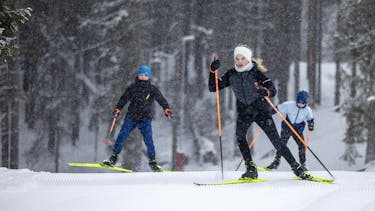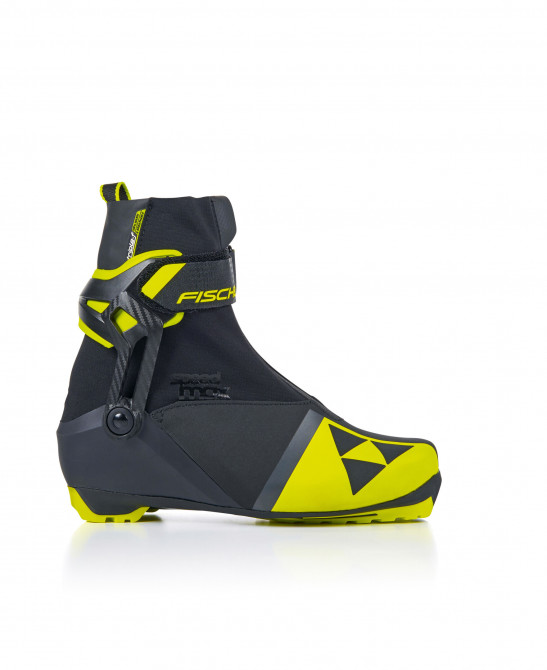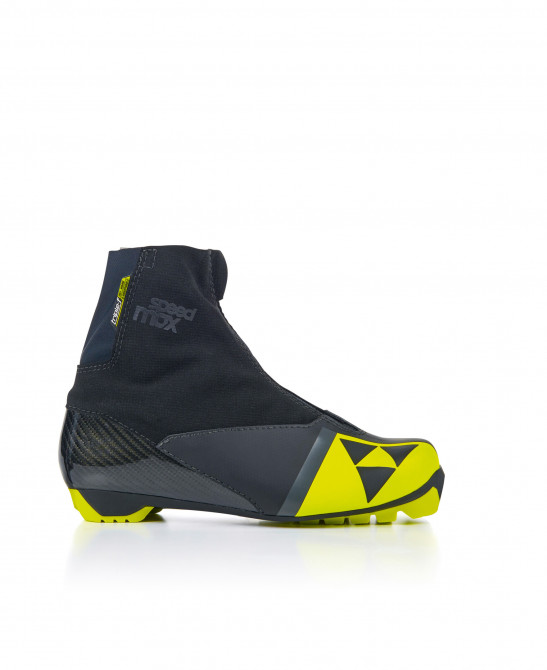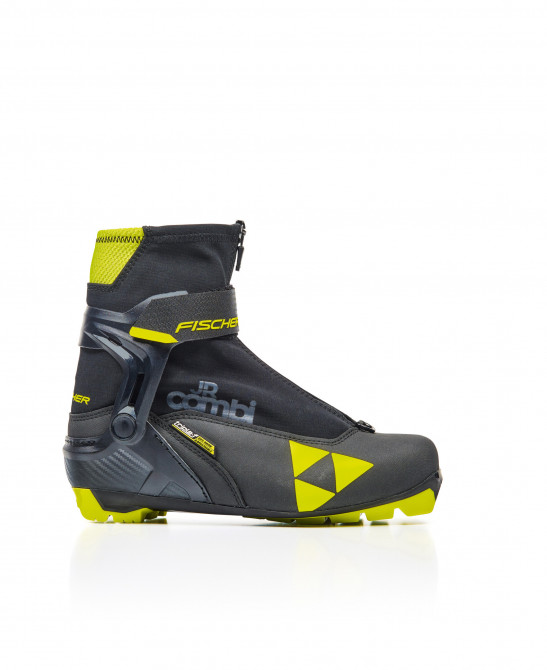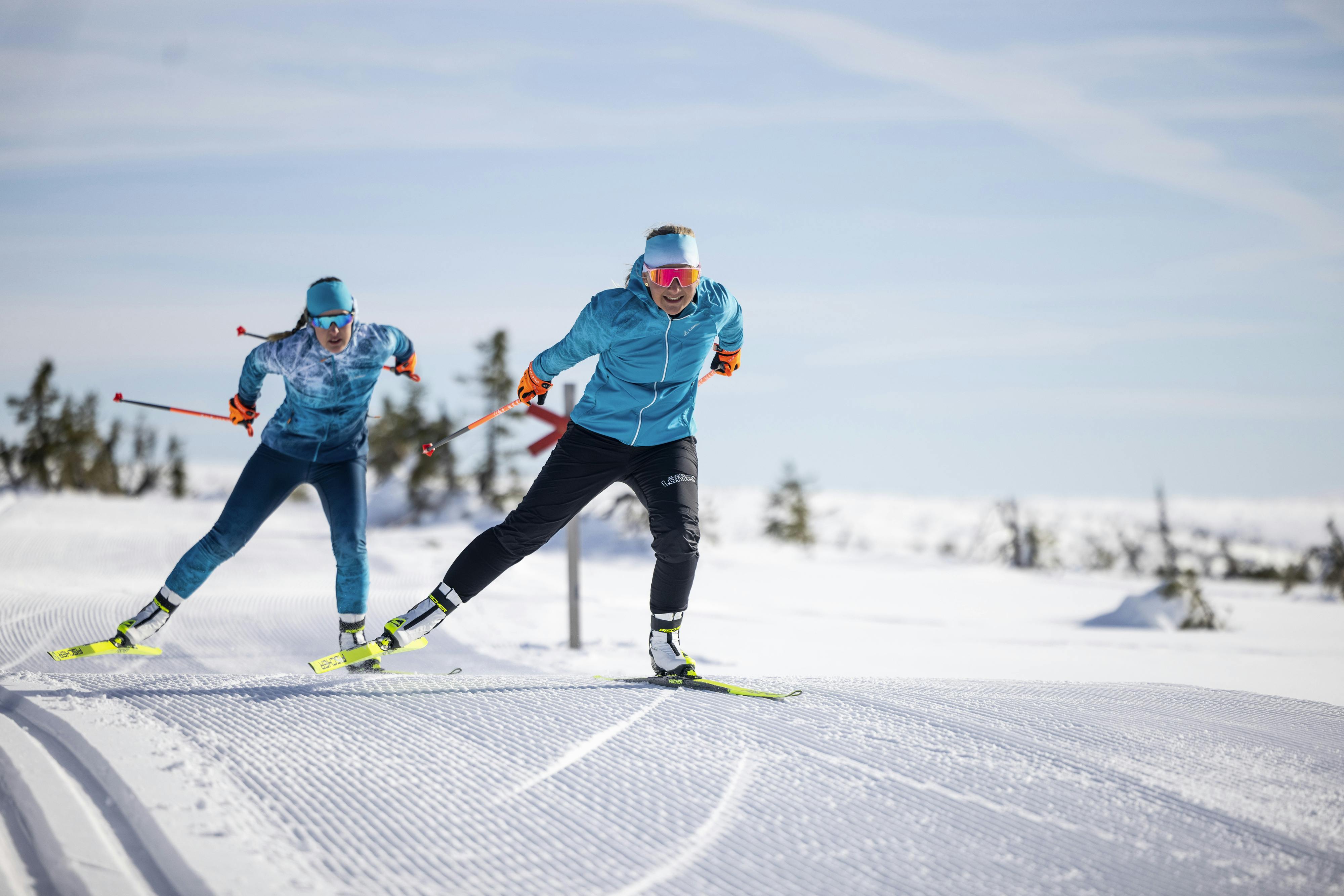Table: Cross-country ski length for kids
For adults, the length of skis is usually determined by body weight (see Fischer Product Finder). Our Product Finder can also be used for kids' cross-country skis.
It is even easier, however, if you use the body size to estimate the right ski length for the little ones, especially when getting started. Because kids quickly feel overwhelmed by boards that are too long, we also recommend to use slightly shorter skis so that the fun is guaranteed. The following rule of thumb is recommended for kids:
- Skating: For beginners take the body size and subtract 5 to 10 cm. For advanced kids take the body size and add 5 cm to 10 cm
- Classic: For beginners take the body size and add +10 cm, for advanced kids take the body size and add 10 cm - 20 cm
Kids' cross-country skis are available in lengths between 110 and 170 cm. When in doubt, it is wiser to choose a slightly shorter version - especially if the child is still at the beginning of its cross-country skiing career and has to get used to the skis first.
And what does all this mean in terms of numbers? The best way is to look at the table of age, height and weight. These values were determined by the Robert Koch Institute and serve as good orientation:
| Age | Body size | Body weight |
|---|---|---|
| 6 | 121 cm | Bis 25 kg |
| 6-7 | 126-128 cm | 25-29 kg |
| 8-9 | 132-139 cm | 30-34 kg |
| 9-10 | 138-144 cm | 35-39 kg |
| 10-11 | 144-150 cm | 40-44 kg |
| 11-12 | 151-157 cm | 43-47 kg |
| 12-13 | 157-163 cm | 47-54 kg |
If you were missing the ski lengths in this table: No, we haven't forgotten them. However, since each kid develops at a different pace, it makes more sense to measure the size yourself and determine the ski length according to the rule of thumb mentioned above. Then only the factor body weight remains:
- rather high weight - add 5 cm additionally
- rather low weight - subtract 5 cm shorter
As a general rule, the heavier the kid, the longer the ski may be. As you can see, the optimal length depends on very individual factors. That's exactly why it's worth measuring by yourself and asking your dealer if necessary.
When can a kid begin with cross-country skiing?
Theoretically a first cross-country skiing course can be completed by children starting from the age of 3. Often, kids whose parents themselves regularly go cross-country skiing, are particularly interested. Clearly, what the grown-ups do is always super exciting!
No matter how much experience and/or ambition you have in cross-country skiing as a parent: Be careful not to overburden your child. There's still time for long and demanding distances, technical refinements, speed, etc. - for the beginning it's all about the kid having fun with cross-country skiing!

Skating skis for kids or rather classic cross-country skiing?
Starting from an age of about 8 years the (experienced) cross-country skiing offspring can start skating. Is that wise? And do you have to buy your own pair of cross-country skis for the kid for its first attempt? We will answer all these questions later on!
Skating Ski versus Classic
Compared to classic cross-country skiing (which in itself requires a certain level of fitness!), skating is even more demanding. The movements are similar to inline skating and a skating cross-country ski is shorter and harder than its classic relative.
But since many children like to blow off steam, there is nothing to stop them from attempting skating. However, if it's the first few days on cross-country skis, we would recommend classic cross-country skiing on a soft classic ski.
Buying or renting used cross-country skis for kids: Yes or No?
Children grow...and grow...and grow seemingly forever! Accordingly, a pair of skis is in use for an average of 2 years before it ends up too small. So, the question quickly arises whether it always has to be a new purchase - can't cross-country skis for kids simply be rented or bought second-hand? You should know that:
- For the very first attempt, i.e. if you only want to try whether the child is interested in cross-country skiing at all, there is no reason not to simply rent cross-country skis.
- Used cross-country skis are a double-edged sword: on the one hand they are cheaper than a new purchase, on the other hand they are almost certainly not one hundred percent perfect. Especially for beginners, it is essential that the ski length is correct and the cross-country boot does not pinch or the foot doesn't swim in it. In addition, there is usually no refund policy for second-hand models. If, for example, the skis isn’t tight enough, the kid will have an unnecessary difficult time learning.
The bottom line is that once it becomes apparent that your kid is a cross-country enthusiast and certain to continue, it's worth investing in a pair of his or her own skis tailored to the kid's needs.
Many sports retailers now also offer "Grow-along-skis". You can rent the equipment for a season, purchase it afterwards, or exchange it the following year for the next size for a new rental fee.

The perfect cross-country skiing equipment: cross-country ski set for kids
You don't want to pick the cross-country equipment for your child separately? Then we recommend a useful set of skis, bindings and boots. This is possible for the Sprint Crown Junior in our assortment. (You can easily identify the right equipment by the model name "Sprint".) Apart from that, cross-country skiing equipment also includes a number of other things that we have summarised in the following checklist.
Cross-country ski boots and poles for kids
Just like the skis themselves, the cross-country poles need to have the right length. You can easily calculate the pole length as follows:
- Classic cross-country skiing: Body size x 0.85 (or maximum reaching the armpit)
- Skating: Body size x 0.90 (or maximum up to chin/nose height)
As far as boots are concerned, it is very important that the kid tries them on wearing the socks he or she will wear on a cross-country ski run. A good fit with enough (but not too much) space for the foot is the be-all and end-all. This is precisely why we would advise against simply using the cross-country skiing boots of older siblings or other "heirlooms" - if you have no secure stand in those boots or your foot is compressed, safety and fun will be a thing of the past.

Clothes & other equipment for cross-country skiing: Checklist
Cross-country skis, boots and poles are of course the heart of all equipment, but your kid - just like adults - also needs a few other things for a wonderful day on the trail. Here is the checklist for a quick overview!
✓ Breathable clothing according to the onion principle
Merino wool is ideal; if this is too expensive for you, it is best to wear functional clothing. Alpine ski clothing should stay at home since it's way too warm for sweaty cross-country skiing.
✓ Cap or headband
More than half of the body heat gets lost through the head!
✓ (Cross-country) sunglasses with sufficient UV protection
Snow reflects a lot of UV radiation and headwind can restrict visibility.
✓ (Cross-country) gloves
The kid must be able to grab and hold the poles securely.
✓ Neck protection
A thin hose scarf is enough. Never leave home without a neck warmer to protect from the wind.
✓ A second set of everything that is worn directly on the body
Ideally your child can change wet socks etc. if you take a longer break.
✓ Enough snacks and drinks
Even the fittest kid needs a break, and absolute newbies to cross-country skiing even more so. Muesli bars, a banana, bread, tea or water - regular refreshments are definitely needed!
Once the right cross-country ski length for your kid has been found and you can completely check this checklist, nothing stands can keep you from a relaxed cross-country skiing day - have fun!
